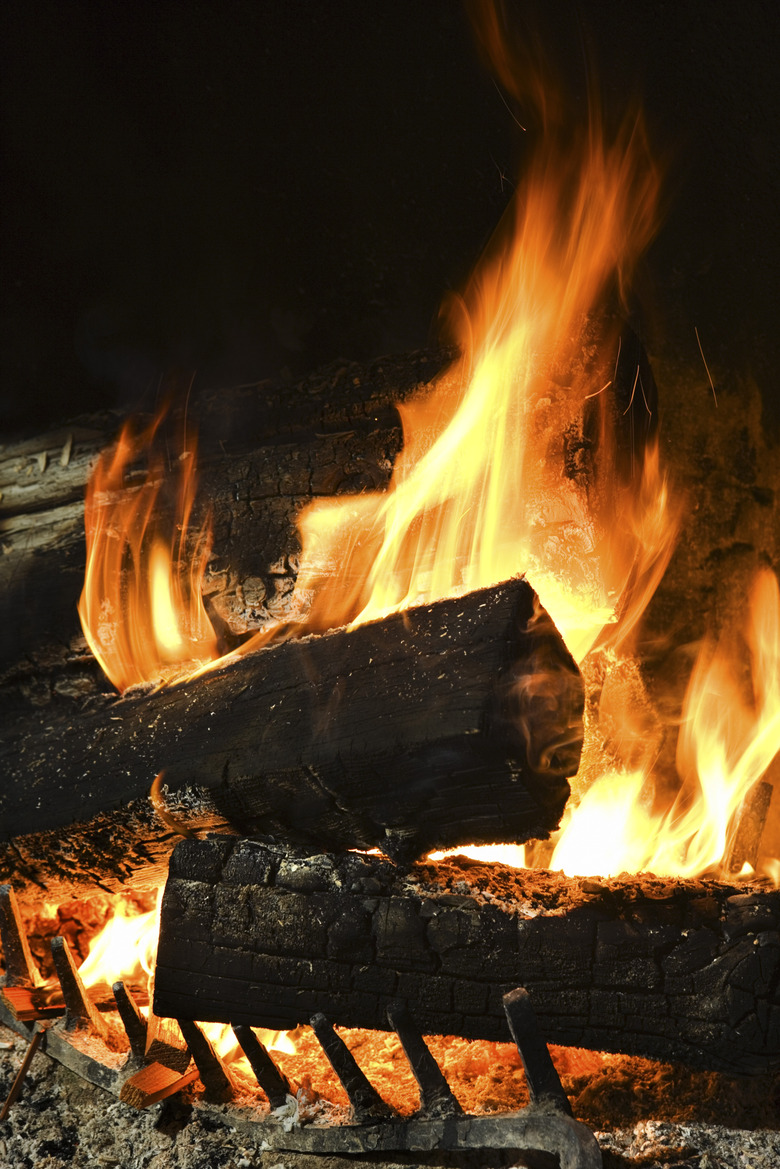Why Does Wood Spark In The Fireplace?
Wood burning in an open fireplace gives off radiant heat and pleasant flames for fireplace fans. Wood, however, sometimes pops and sparks in the fireplace, throwing pieces of hot wood called embers into the room. Not all firewood sparks, but some woods pop more easily than others. Choose and use wood carefully to minimize sparks.
Properties of Firewood
Properties of Firewood
Woods such as red cedar and poplar are resinous, containing tree saps that are highly flammable. When resin bits catch fire, they explode and throw hot sparks up the chimney and out the front of the fireplace. Softwoods such as conifers and pines are more likely to spark due to their high resin content. If you see dry, amber sap that's oozed out and dried on the wood, this is likely resin. Be aware that this type of wood burns hot and throws sparks more easily than other woods. Some woods have moisture pockets inside the wood, and as these pockets heat in a fire, the trapped gases explode and throw flaming wood debris or sparks out of the fireplace.
Problems
Problems
When firewood burns, it doesn't completely decompose in the flames. The thick, dark smoke that goes up the chimney contains tars that deposit on the chimney as creosote. When creosote and soot form layers in the chimney, they're flammable and can catch fire. As sparks go up the chimney, they act like matches and can set creosote on fire, causing a chimney fire that harms the chimney and house–and possibly people. Other sparks pop out into the room, throwing tiny hot embers on carpets, drapes and furniture. The embers smolder, often unnoticed for hours, and cause fires.
Safety
Safety
Keep the fireplace and chimney free of creosote and other deposits. Check the chimney for cracks or deterioration. Install a spark cap on the chimney. Split and stack firewood so that air circulates around it and dries it. Allow green wood to dry for at least 6 months, as this reduces moisture. Use safety screens or glass doors in front of fireplaces; these catch many flying sparks. Keep flammable materials such as papers away from the fireplace area. Look for fire-retardant hearth rugs that trap escaping sparks.
Other Considerations
Other Considerations
Fires made primarily from high-resin woods pop heavily, sending fountains of sparks up the chimney, so limit the use of resin woods by utilizing them only as kindling or in mixed fires of softwood and hardwood. An effective chimney cap contains sparks so they don't land on roofs, where they could filter through shingle gaps into the attic. Particularly hot fires can transfer heat into the house walls and frame, causing hidden fires, so check the house carefully after a sparking fire.
